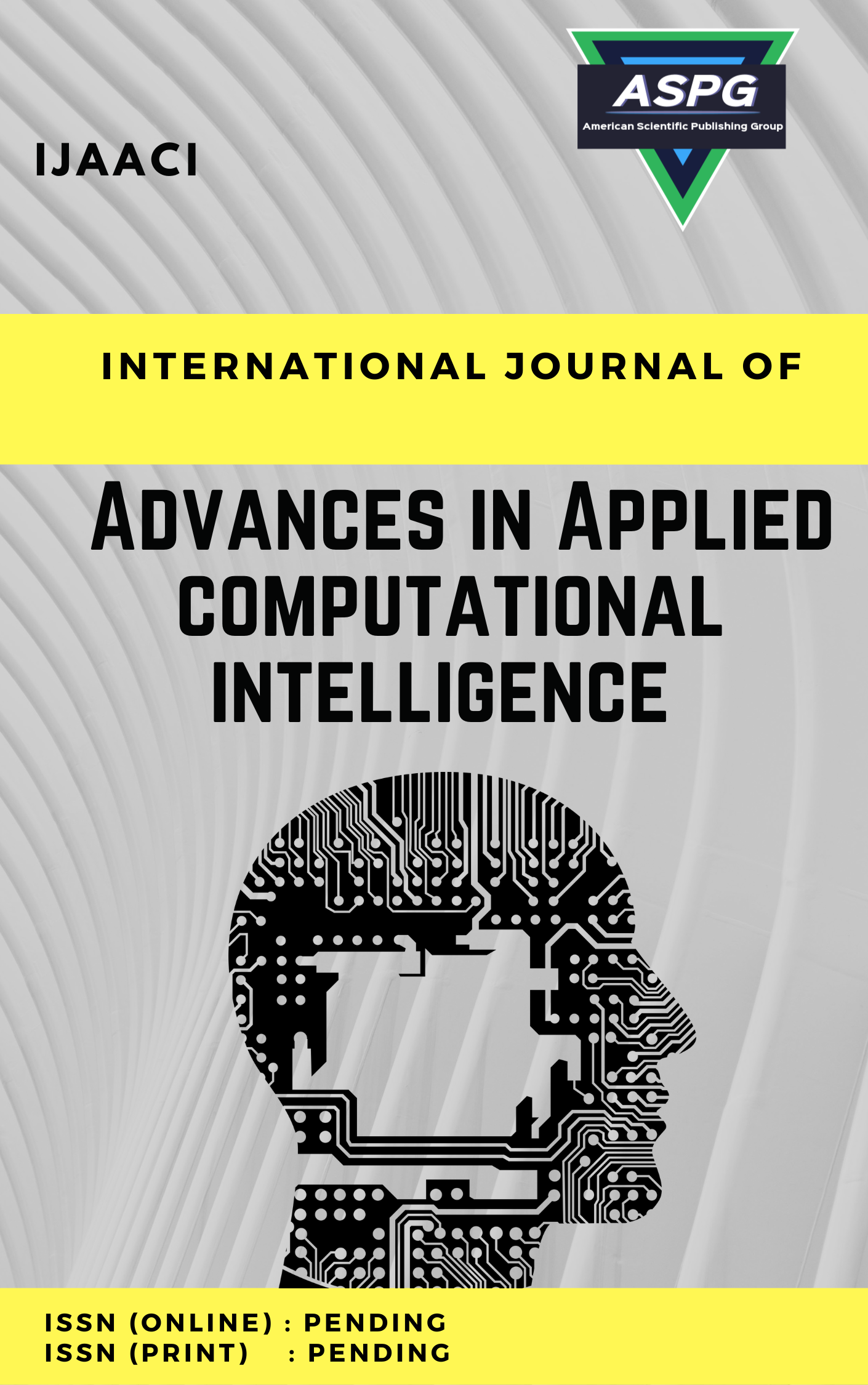

Volume 1 , Issue 2 , PP: 56-62, 2022 | Cite this article as | XML | Html | PDF | Full Length Article
Heba R. Abdelhady 1 * , Mahmoud M. Ismail 2
Doi: https://doi.org/10.54216/IJAACI.010204
Providing medical treatment is a vital part of human existence. Diseases of the heart and blood arteries are often referred to as cardiovascular disease. Predicting cardiovascular illness early on allowed doctors to make adjustments for individuals at high risk, lowering their mortality rate. Machine learning techniques are necessary for making appropriate judgments in the forecasting of cardiac problems because of the vast amounts of medical data available in the healthcare business. Mixed machine-learning approaches are the subject of recent research on unifying these methods. The study proposed machine learning models to predict the heart disease. In order to determine whether or not a person has heart disease, this project presents a model for forecasting. To achieve this, we compare the accuracy of using rules to that of using the Support Vector Machine (SVM), Random forest (RF), and Decision Tree (DT) separately on the dataset.
Machine Learning , Forecasting , Cardiovascular , Support Vector Machine , Decision Tree , Random Forest.
[1] K. Shameer, K. W. Johnson, B. S. Glicksberg, J. T. Dudley, and P. P. Sengupta, “Machine learning in cardiovascular medicine: are we there yet?,” Heart, vol. 104, no. 14, pp. 1156–1164, 2018.
[2] W. Sun, P. Zhang, Z. Wang, and D. Li, “Prediction of cardiovascular diseases based on machine learning,” ASP Trans. Internet Things, vol. 1, no. 1, pp. 30–35, 2021.
[3] C. Krittanawong et al., “Machine learning prediction in cardiovascular diseases: a meta-analysis,” Sci. Rep., vol. 10, no. 1, p. 16057, 2020.
[4] K. G. Dinesh, K. Arumugaraj, K. D. Santhosh, and V. Mareeswari, “Prediction of cardiovascular disease using machine learning algorithms,” in 2018 International Conference on Current Trends towards Converging Technologies (ICCTCT), IEEE, 2018, pp. 1–7.
[5] B. A. Goldstein, A. M. Navar, and R. E. Carter, “Moving beyond regression techniques in cardiovascular risk prediction: applying machine learning to address analytic challenges,” Eur. Heart J., vol. 38, no. 23, pp. 1805–1814, 2017.
[6] S. F. Weng, J. Reps, J. Kai, J. M. Garibaldi, and N. Qureshi, “Can machine-learning improve cardiovascular risk prediction using routine clinical data?,” PLoS One, vol. 12, no. 4, p. e0174944, 2017.
[7] A. Dinh, S. Miertschin, A. Young, and S. D. Mohanty, “A data-driven approach to predicting diabetes and cardiovascular disease with machine learning,” BMC Med. Inform. Decis. Mak., vol. 19, no. 1, pp. 1–15, 2019.
[8] S. Mezzatesta, C. Torino, P. De Meo, G. Fiumara, and A. Vilasi, “A machine learning-based approach for predicting the outbreak of cardiovascular diseases in patients on dialysis,” Comput. Methods Programs Biomed., vol. 177, pp. 9–15, 2019.
[9] P.-Y. Tseng et al., “Prediction of the development of acute kidney injury following cardiac surgery by machine learning,” Crit. care, vol. 24, no. 1, pp. 1–13, 2020.
[10] G. Kissas, Y. Yang, E. Hwuang, W. R. Witschey, J. A. Detre, and P. Perdikaris, “Machine learning in cardiovascular flows modeling: Predicting arterial blood pressure from non-invasive 4D flow MRI data using physics-informed neural networks,” Comput. Methods Appl. Mech. Eng., vol. 358, p. 112623, 2020.
[11] M. Motwani et al., “Machine learning for prediction of all-cause mortality in patients with suspected coronary artery disease: a 5-year multicentre prospective registry analysis,” Eur. Heart J., vol. 38, no. 7, pp. 500–507, 2017.
[12] E. K. Oikonomou et al., “A novel machine learning-derived radiotranscriptomic signature of perivascular fat improves cardiac risk prediction using coronary CT angiography,” Eur. Heart J., vol. 40, no. 43, pp. 3529–3543, 2019.
[13] J. I. Z. Chen and P. Hengjinda, “Early prediction of coronary artery disease (CAD) by machine learning method-a comparative study,” J. Artif. Intell., vol. 3, no. 01, pp. 17–33, 2021.
[14] P. Ghosh et al., “Efficient prediction of cardiovascular disease using machine learning algorithms with relief and LASSO feature selection techniques,” IEEE Access, vol. 9, pp. 19304–19326, 2021.
[15] B. Ambale-Venkatesh et al., “Cardiovascular event prediction by machine learning: the multi-ethnic study of atherosclerosis,” Circ. Res., vol. 121, no. 9, pp. 1092–1101, 2017.
[16] Z.-H. Zhou, Machine learning. Springer Nature, 2021.
[17] G. Carleo et al., “Machine learning and the physical sciences,” Rev. Mod. Phys., vol. 91, no. 4, p. 45002, 2019.
[18] G. Mountrakis, J. Im, and C. Ogole, “Support vector machines in remote sensing: A review,” ISPRS J. Photogramm. Remote Sens., vol. 66, no. 3, pp. 247–259, 2011.
[19] R. G. Brereton and G. R. Lloyd, “Support vector machines for classification and regression,” Analyst, vol. 135, no. 2, pp. 230–267, 2010.
[20] B. Charbuty and A. Abdulazeez, “Classification based on decision tree algorithm for machine learning,” J. Appl. Sci. Technol. Trends, vol. 2, no. 01, pp. 20–28, 2021.
[21] Y. Ben-Haim and E. Tom-Tov, “A Streaming Parallel Decision Tree Algorithm.,” J. Mach. Learn. Res., vol. 11, no. 2, 2010.
[22] J. L. Speiser, M. E. Miller, J. Tooze, and E. Ip, “A comparison of random forest variable selection methods for classification prediction modeling,” Expert Syst. Appl., vol. 134, pp. 93–101, 2019.
[23] T. Hengl, M. Nussbaum, M. N. Wright, G. B. M. Heuvelink, and B. Gräler, “Random forest as a generic framework for predictive modeling of spatial and spatio-temporal variables,” PeerJ, vol. 6, p. e5518, 2018.